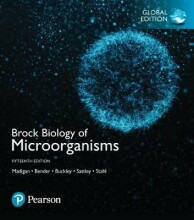Phylogenetic diversity of Bacteria - DEltaproteobacteria and Epsilonproteobacteria
10 important questions on Phylogenetic diversity of Bacteria - DEltaproteobacteria and Epsilonproteobacteria
What four metabolic traits are most common in species of Deltaproteobacteria?
What distinguishes Deltaproteobacteria and Epsilonproteobacteria from Alpha-, Beta-, and Gammaproteobacteria?
What are the primary metabolic activities of Deltaproteobacteria, and name a key genus associated with each activity?
- Higher grades + faster learning
- Never study anything twice
- 100% sure, 100% understanding
Describe the characteristics and habitat preferences of Desulfovibrionales within Deltaproteobacteria.
What is syntrophy, and how is it exemplified by Syntrophobacter wolinii in Deltaproteobacteria?
Name the key genera in Epsilonproteobacteria and their initial defining characteristics.
They are gram-negative, oxidase- and catalase-positive, motile spirilla, and often pathogenic to humans or animals
What diseases are caused by Campylobacter species, and what are the characteristics of these organisms?
They are gram-negative, microaerophilic, and must be cultured under low O2 and high CO2 conditions.
Describe the ecological roles of Epsilonproteobacteria in sulfur-rich environments and their association with hosts.
Why is the ability of Epsilonproteobacteria to fix CO2 significant, and where are they particularly abundant in nature?
How do Epsilonproteobacteria benefit animals living in sulfur-rich environments, and what roles do they play as symbionts?
The question on the page originate from the summary of the following study material:
- A unique study and practice tool
- Never study anything twice again
- Get the grades you hope for
- 100% sure, 100% understanding
































